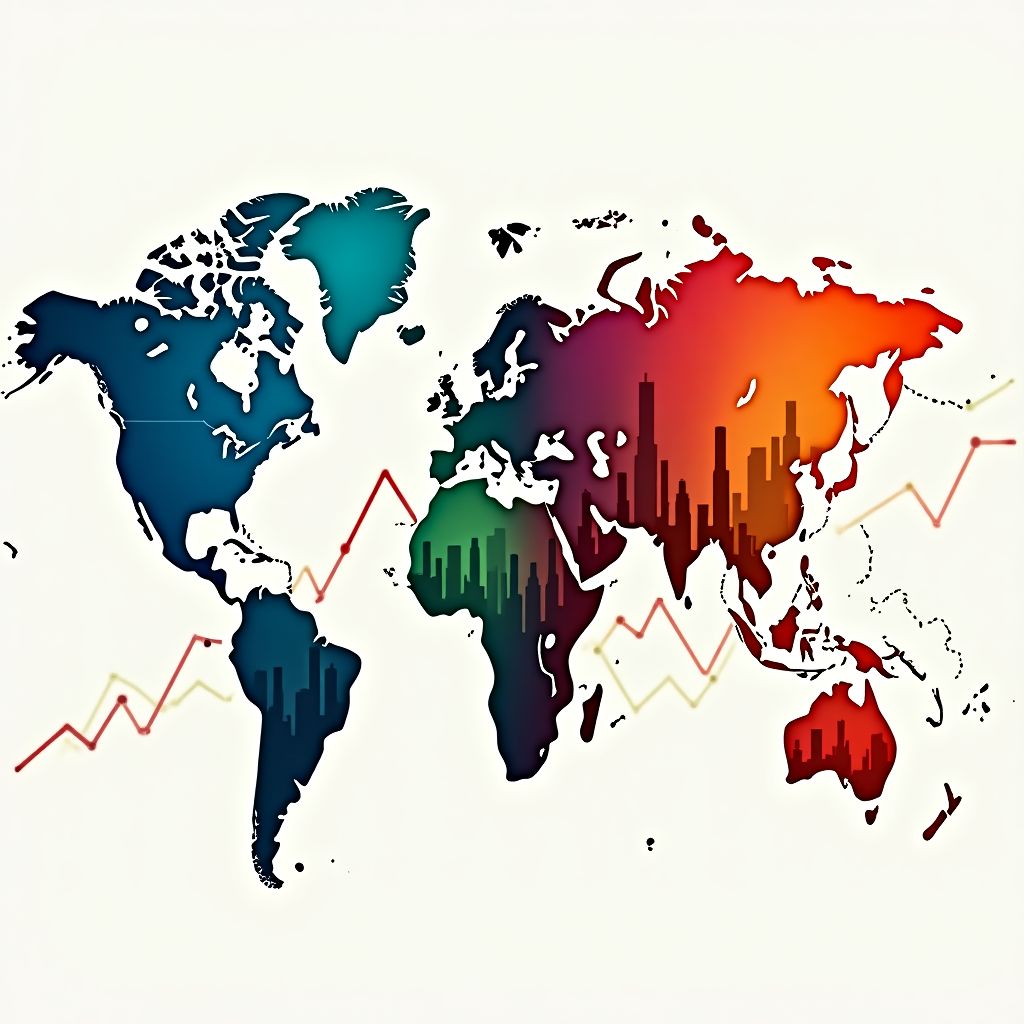How does one describe the whisper of economic winds that float through a chilly, foggy Colorado morning, painting a picture of a world spinning on its fiscal axis? For Zeihan on Geopolitics' Peter Zeihan, it’s a tale as old as time: the rise and fall of civilizations, woven into the fabric of GDP charts, demographic booms, and, of course, the ticking clock of history.
Today, at iNthacity, we're taking a deep look at a recent video by Peter Zeihan. With a spotlight on how the growth patterns we’ve seen over the last several decades are unraveling, Zeihan's insights are as indispensable as they are provocative. Buckle up for a rollercoaster narrative that detangles the intricacies of global economic trends, what they mean for nations—from China’s rapidly unfurling narrative to the dimensional tales of Europe and beyond—and ultimately, for the future of the world we inhabit.
The China Conundrum
Let's start with China, oh China, the illustrious and enigmatic dragon that has puzzled economists for generations. Imagine a nation whose skyline embodies rapid transformation yet hides a shadowy tale of data disparities. China, with its infamous one-child policy and industrial subsidies, once reigned supreme in economic growth. But, like a Shakespearean tragedy, its vibrant growth now faces a dramatic downturn.
As the tide of youth becomes a wave of middle-aged working professionals, China’s once energetic GDP stirs unrest. This inverse pyramid threatens not just an economy, but the very tapestry of the Han ethnicity's existence by the century's end. China is in the peculiar position of seeing its demographic dividend wane while its workforce grows old. Much like a race car running out of fuel mid-lap, China must now confront the unraveling of its earlier industrial miracle without the luxury of time on its side.
Europe’s Echoes of History
Europe offers another lesson, steeped in its own storied history. Decades of urbanization and industrialization have given way to the specter of demographic decline, a fate that shadows even Germany and Italy. Just picture it: a rocking chair occupied by an aging European economic institution, slowly slipping away.
While the legacy of robust industrialization gave Europe an edge, the echoes of that splendor fade into obsolescence without fresh generations to sustain it. The economic model is ripe for reinvention—a catwalk awaiting new models but fumbling for fresh ideas. Europe, like an old film reel, is slowly running out of footage, and the silence of no new actors is palpable.
Developing World: The Next Frontier?
Across oceans, countries often deemed as "developing" hold an elusive air of possibility. They're the underdogs of this narrative, tantalizingly poised at the brink yet plagued by challenges. Many raced toward growth by first applying industrial technologies—paving roads with asphalt and adorning cities with steel. Their stories paint flourishing canvases of GDP but eventually taper off, exposing vulnerability in not diversifying beyond raw commodities.
These nations' dreams were borrowed on credit, often trapped in the debt-spiral orchestrated by advanced economies. China's predatory strategies, however, mirror scenes from "Pirates of Silicon Valley," uprooting industrial capacities from these nations like Brazilian ventures—Pais Tropical left bare. Yet, herein lies the secret—Brazil and others must innovate anew or risk an intergenerational economic lull.
Rewriting the Narrative
It’s crucial to take heed of the same unvarnished truth: the global economic narrative demands a rewrite. As countries like Turkey and Indonesia trod parallel paths—bearing the gifts of cracking industrial codes but flirting dangerously close to demographic peril—it's a race against the clock toward economic transformation. While their hourglass isn't yet void, this remains a question not just of prosperity but existential survival.
In this first half of the 21st century, entrenched growth patterns confront entropy, dragging with them a collective hope. But let's not end on a dour note. Countries positioned to adapt and evolve can still fashion their fates brightly. As the sagely adage prescribes: adapt, innovate, or yield.
Pause here to view Peter Zeihan's complete talk. His perspectives offer a panoramic view that's both holistic and brimming with nuances on today's global stage:
Call to Action
As you delve into this intricate tapestry, consider the weight of historical momentum, demographics, and the crucial pivot toward sustainability. What surprises lie at the economic horizon? How will these challenges redefine global relationships? Share your musings in the comments below and become part of the iNthacity narrative.
Join the "Shining City on the Web", where we offer a haven for insights and a community to explore the crests and troughs of our global economic sea. Like, share, and don't hesitate to debate with us—a robust dialogue is worth more than gold!
As we continue to unravel this symphony of economics, ponder: Is the world truly entering an era of destined decline, or is there a rebirth beyond the horizon? Let us know your thoughts; civic discourse awaits at every corner of our Shining City.
Wait! There's more...check out our fascinating short story that continues the journey: A Moment in Time
Disclaimer: This article may contain affiliate links. If you click on these links and make a purchase, we may receive a commission at no additional cost to you. Our recommendations and reviews are always independent and objective, aiming to provide you with the best information and resources.
Get Exclusive Stories, Photos, Art & Offers - Subscribe Today!


























Post Comment
You must be logged in to post a comment.